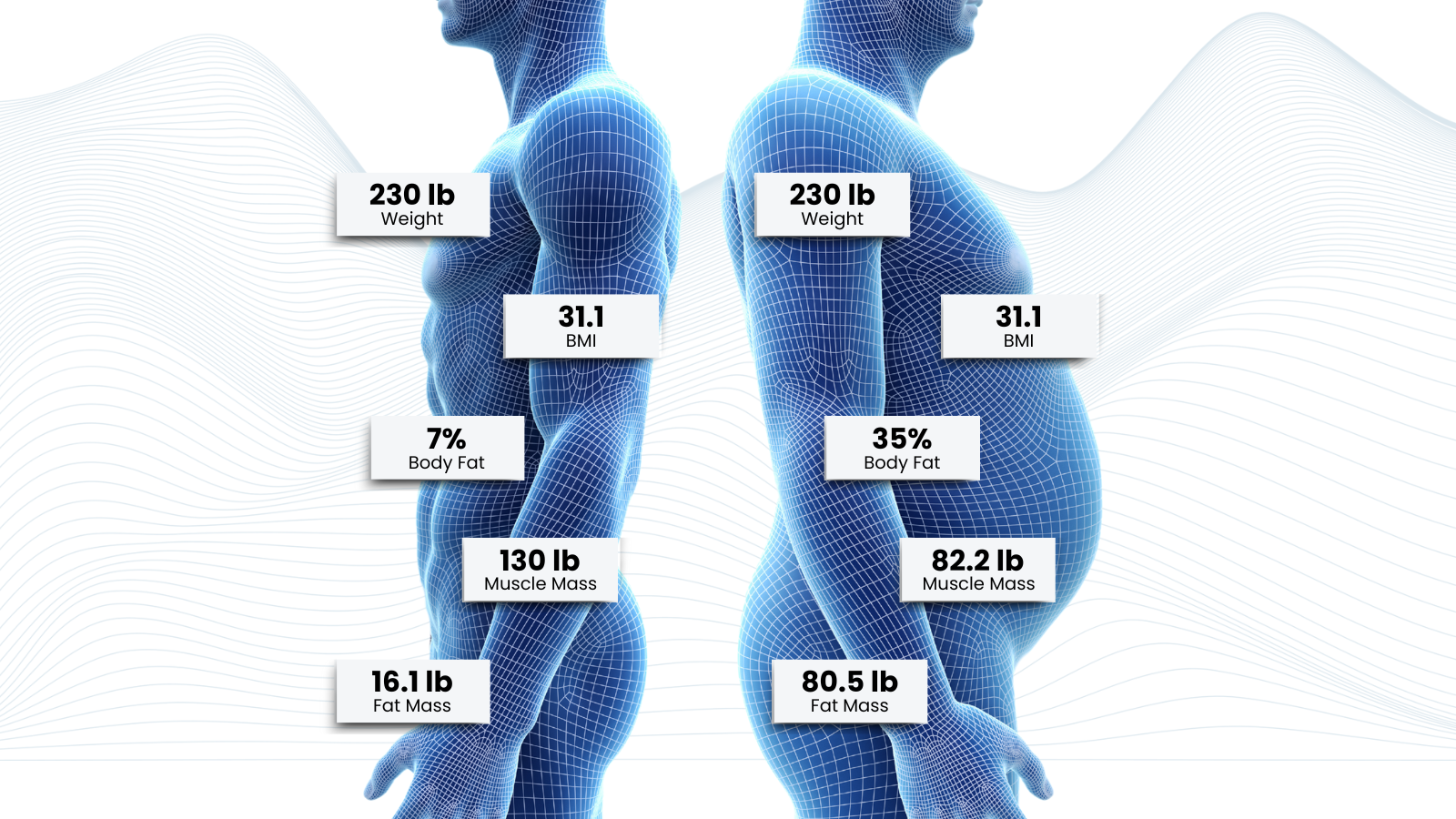
Why Body Weight Isn’t Enough: The Power of Tracking Body Composition
Tracking your fitness progress by weight alone can be misleading. This article explains why body composition—specifically fat mass, muscle mass, and body fat percentage—offers a clearer picture, and how tools like bioelectrical impedance analysis (BIA) can help you make smarter training and nutrition decisions.
It’s common for people pursuing a fitness goal to use body weight as their primary measure of progress.
This isn’t necessarily bad.
Weight provides a rough indicator of how the body is responding to a workout program and diet, and tracking weight loss can help guide adjustments to optimize results.
But weight alone doesn’t tell the full story.
The Limitations of Body Weight#
Weight is only an indirect measure of training success. While changes in weight can be informative in context—combined with exercise habits, diet, and rest—it’s easy for the number on the scale to mislead.
That’s because body weight is influenced by multiple components. A 10-pound gain could mean 10 pounds of fat, 10 pounds of muscle, a mix of both, or even fluctuations in water retention. Without distinguishing between these, weight by itself doesn’t reveal much about actual progress.
Why Body Composition Matters#

This distinction becomes critical in resistance training. The real goal isn’t just to gain or lose weight—it’s to change body composition.
- If the goal is fat loss, the aim is to reduce fat mass while preserving muscle mass.
- If the goal is muscle gain, the aim is to increase muscle mass while minimizing fat gain.
- Even in sports, optimizing the muscle-to-fat ratio is key since fat adds weight without contributing to performance.
That’s why exercise scientists and health professionals often rely on body fat percentage—the proportion of total body weight made up of fat mass.
Body fat percentage is simply the proportion of your total weight that comes from fat.
For instance, if you weigh 180 pounds and 18 of those pounds are fat, your body fat percentage is 10%. This metric reflects changes in fat and muscle more directly than body weight.
Measuring Body Fat Percentage#
There are many ways to measure body fat percentage, with varying levels of accuracy and accessibility. A common method is bioelectrical impedance analysis (BIA).
BIA devices work by sending a small electrical signal through the body and measuring how long it takes to travel.
Since fat and fat-free mass (like muscle) conduct signals differently, the device can estimate body composition. When combined with basic data such as gender and age, it can also estimate metabolic rate (average daily calories burned).
While the most precise BIA devices are found in clinical and research settings, affordable consumer versions are accurate enough to meaningfully guide training and nutrition.
Applying Data to Strength Training#
So how can you use this data-driven approach to optimize your workouts?
1. Use fat mass trends to monitor calorie intake.
If fat mass rises quickly while muscle barely increases, you’re likely overeating. Moderately reducing calories can shift the balance toward leaner gains.
2. Track muscle mass relative to total weight.
If body weight is rising but muscle mass isn’t, your workout program or recovery may need adjustment. Variables like training frequency, volume, intensity, and exercise selection can be fine-tuned to promote muscle growth.
3. Use metabolic rate estimates to guide nutrition.
Knowing how many calories you burn helps set intake goals:
- To build muscle: eat ~250–500 calories more than you burn.
- To lose fat: eat ~250–500 calories less than you burn.
Specialized guidance may be necessary for individuals with chronic conditions, but for most healthy people, small adjustments work best.
4. Adjust training intensity to influence metabolism.
- If you tend to overeat and your metabolic rate is low, increasing workout intensity or duration can help.
- If you struggle to eat enough, reducing intensity may prevent your metabolism from outpacing your intake.
Final Thoughts#
Your workouts don’t need to be perfect—just effective enough to move you closer to your goal. By tracking body composition instead of relying solely on body weight, you’ll gain clearer insights and make smarter adjustments. Over time, this data-driven approach helps you progress more efficiently and sustainably.